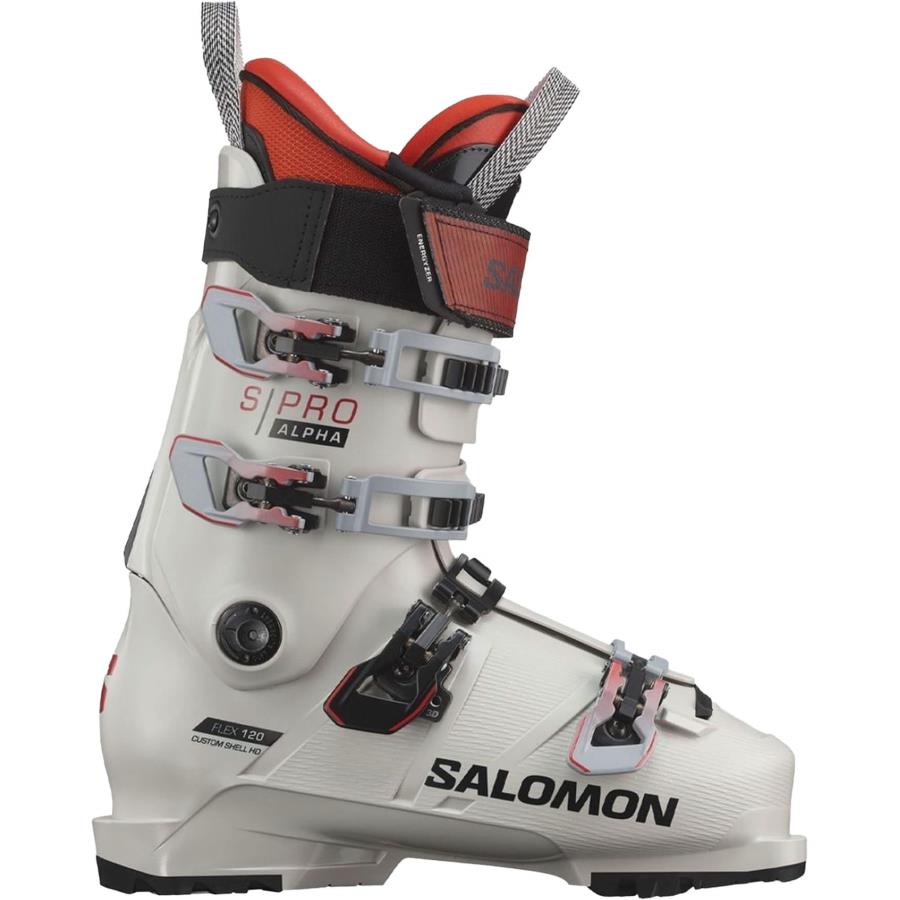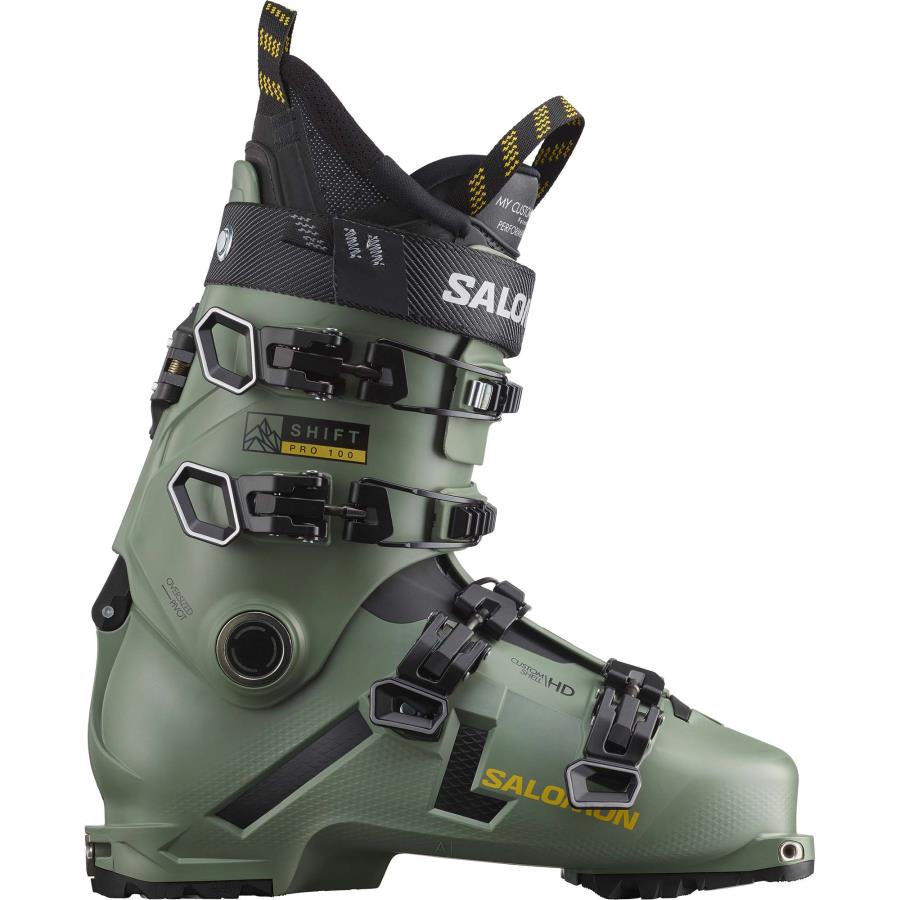The Absolute Guide to Buying Ski Boots
.png)
Welcome to the Absolute guide to everything you need to know about buying Ski Boots.
Finding the right ski boot isn’t a simple task and can be confusing to navigate all the tech and buzz words out there, it is important to look at models suited to your foot shape and ability level rather than buying the one you like the look of. We have put together this extensive buying guide to help you narrow down our range of ski boots which include top brands such as Salomon, Full Tilt, Head, Atomic, Rossignol, Nordica, K2 and Lange just to name a few.
If you’re looking at touring specific boots please be aware of the compatibility issues you may face when it comes to bindings, It’s important to do the relevant research and if you’re still unsure please get in touch with our Ski Experts for assistance.
There's nothing worse than being stuck on the top of a mountain in boots that are either so tight they cause discomfort or so loose that your feet move around in them and you don't have the control to feel confident on your skis.
Buying your own Ski boots can improve your skiing considerably and is the first piece of hardware you should acquire before even contemplating skis. When people talk about buying their own Ski boots you tend to hear it was the best thing they have ever purchased in their skiing career thus far and they dread the day they need to replace them, luckily a well fitted ski boot should last many years.
By choosing our complementary Absolute Comfort Guarantee Bootfit service we ensure that buying your own boots will leave you wondering why you didn’t do it sooner, Here are just some of the benefits of buying your own ski boots.
● No more wasted time with visits to the rental shop or having to swap uncomfortable boots mid way through the day, meaning more time spent on the hill.
● No more sharing your boots with hundreds of people!
● Modify the fit and fine tune your boots to work best for you.
● Improved comfort and a decreased level of fatigue, again allowing you to spend longer on the hill.
● Wearing a correctly fitting ski boot will aid you in learning at a faster rate.
● You will save money as boots can last up to 10 years if well cared for. If you are flying we can provide a free boot bag during your boot fit meaning you can take them on as hand luggage!
On average women have calf muscles that are lower and wider, with feet that have a narrower heel profile and a wider forefoot.
Men tend to have longer and a more elongated calf shape so their boots tend to be higher and more cylindrical around the cuff. This means that men’s ski boots can limit blood flow by putting too much pressure on the calf for some women which can potentially limit blood flow and leave you with cramped and colder feet, Women specific boots are lower and flared around the cuff to accommodate for the difference in shape.
That being said don't worry if the best fitting boot for you is actually the opposite sex. If you’re a tall female and have a fairly large foot then a men’s size boot might actually work out great, the same applies to men with smaller foot sizes and large calf muscles.
Your conventional ski boot consists of three main parts, these are the shell, liner and footbed. Each part has a big part to play in the overall performance and comfort of the boot.
A lot of thought goes into the shell of a ski boot and it easily has the most impact on your skiing. This is down to the fact that the shell determines the flex of your boot which affects how responsive your ski will feel and also the fit. The two main different types of Ski boot shells are two piece constructions and three piece constructions. Both types of boots are suitable for any type of skier and have their own benefits.
Three piece ski boots are often preferred by mogul skiers, freestyle skiers and those looking for a more progressive flex which is a result of having an independent tongue and cuff to the shell. However the fit is still the most important aspect.
Two piece ski boots is the most common used type of shell and provide great lateral response providing brilliant edge to edge control while skiing.

A liner can also make a large impact on the fit of a ski boot. Manufacturers will use a wide range of different materials and methods to help customise the ski boot to your foot shape while keeping your feet well insulated. The quality of liner will change in boots depending on which ability level it targets, as beginners tend to focus on comfort and warmth and more advanced skiers will be more interested in foot retention and performance.
You can see here with these liners the material around the heel and ankle changes with the boots targeted ability level.

The majority of the time manufacturers won’t spend too much time or effort into designing a high tech footbed as they understand everyone's foot is different.
They are often very generic in ski boots and the majority of Bootfitters and manufacturers will advise that you replace it with a more supportive out of the box footbed or custom footbed. You can read more regarding supportive footbeds as it has its own category within this guide.

Probably the most overlooked aspect of ski boot fitting but when wearing a ski boot it's really important to have a good quality sock. A technical ski sock can transform how a ski boot feels with the general rule of thumb being thinner and more technical fabrics are better.
People often try doubling up on socks to improve warmth which in itself can cause rubbing, circulation issues and trap moisture which only make your feet colder and therefore should be avoided. The liner is there to insulate your foot and if you still suffer from cold feet there are products on the market to help with this. For more information regarding cold feet please refer to our Common comfort related issues article.
A good quality sock should tick the following boxes.
● A technical moisture wicking material to help deal with sweat, for example merino wool.
● Correctly fitted to your foot with no bunching of the sock to reduce potential circulation issues.
● Padding around shin area to increase comfort.
Check out our full range of Ski Socks today!
For the majority of people the hardest part of buying a ski boot is sizing, as it doesn’t translate very well to your UK size. Skiing in the wrong size ski boot can come with an array of problems from hindering your progression to discomfort.
The instep is located above your arch and is essentially the top of your foot. Due to a lot of nerves and veins running through this area, it’s important not to overlook this part of the foot as its one of the most common areas that can affect circulation resulting in numbness and cold feet. The majority of skiers at some point have experienced this with rental boots, the cause of this is often from over tightening the lower two buckles.
The main purpose of these two buckles is to close the water seal and should not be used to adapt the fit.
Ski boot lengths are determined in Mondopoint (MP for short) which was developed by boot manufacturers to make ski boot sizes universal. However Mondopoint is measured in centimetres so is easily something you can work out at home.
Your ski boot size in most cases will be smaller than your day to day shoe size. Although you may see some boots coming in sizes of for example 26.0 and 26.5 there are actually no half sizes. There can be slight differences made to ski boot liners in a half size, but by today’s standards they will feel more or less identical and are often only available in either half or whole sizes.
In order to correctly measure your foot make sure that you’re stood in a ski position measuring from the back of the heel to the longest toe. Due to ski boots sharing the same shell in a whole or half size you may want to size up when measured over the half way point. For example if you measure as a 26.2cm you will want a 26.0/26.5mp however if you are measuring as 26.7 you will feel more comfortable in a 27.0/27.5mp.
When initially trying on a ski boot it is normal to feel your toes touching the end, this is due to your foot and leg not yet being positioned in the boot correctly. By doing up the buckles and flexing forwards into a ski position your heel will slide into the back of the boot, this in turn will put your foot into the correct position and your toes will come away from the end.
For more information feel free to browse our Ski Boot Sizing Chart.
If you do experience problems with toe room please refer to our Common Comfort Related Issues With Ski Boots article for more information on what you can do to improve the fit of your ski boot.
The “Last” refers to the width of the boot, this helps us narrow down the range of suitable boots fairly quickly. We work at identifying boot models by 3 different measurements.
98mm = Narrow
100mm = Average
102mm = Wide
You can work out your last width by measuring from the ball of the foot just behind your big toe across to just behind your little toe which is the widest part of the forefoot. By pairing this information with your length measurement we can understand roughly the width of your forefoot, using this information we can match it up with the Last width measurement of a ski boot to find the right width boot for you.
Due to the levels of variation in how the manufacturers measure their boots the following should be used as a rough guide in understanding your width. The majority of mens ski boots will be measured at a 26.5mp and the majority of women’s will be measured at a 24.5mp, the width measurement in most cases changes by +2mm when going up a full size or -2mm when going down a full size.
If you’re still unsure of what width of ski boot you require please Contact Us and provide your length and width measurements.
A vast majority of boots on the market now offer heat mouldable shells, however it is not always compulsory to perform this process. It just means that they’re easily stretched using the foot should it need to be done, it is still important to try and get the best option straight out of the box.
Boots will vary in heel hold shape, the change in heel grip is noticeable when going from a narrow to wide boot however within the same width range there will be smaller differences. Some will be designed to grip more defined Achilles therefore could feel tighter where as others are for people with less defined Achilles.
Again a supportive footbed is important to achieve a good fit especially when it relates to this area of the boot. Multiple key nerves, veins and arteries run around this area and without a supportive footbed your foot is more likely to have unwanted movement, resulting in poor positioning which can then lead to discomfort and possibly cause numbness.
The flex of a boot is usually incorporated into the name with most boots for example Salomon XPro 120. This should be seen as a guideline to the boots flex, they're not universally graded and are determined by the manufacturer so they can vary from one boot to the next.
Here at Absolute snow our boots range from a 80 - 130 for men’s specific boots and 70 - 110 in ladies, this allows us to fit skiers of all abilities. As a guideline your average intermediate who is comfortable on red runs and is still progressing will in most cases have a flex around 100 for men and 90 for ladies. The main things for you to consider when selecting the right flex boot for you are as follows.
● Ability level - A novice skier will benefit more from a boot on the softer side, this will aid them with maintaining a good skiing posture. An advanced skier will benefit from a stiffer boot due to it being more responsive and allowing them to drive more power through to the ski. Please remember there is a difference between a skier who can get down a black run and a skier who can get down a black run comfortably while maintaining a good skiing posture.
● Preferred terrain - A race skier or big mountain skier will benefit more from a stiffer boot due to higher speeds and the need for a quick response from their boot. Where as a freestyle skier may prefer a slightly softer boot as to aid with impact absorption.
● Rate of progression - If you’re progressing quickly then you should take this into account when selecting your boot.
● Strength and weight - Heavier or stronger skiers will require a slightly stiffer boot as it will be easier for them to flex the boot regardless of ability level. When trying on Ski boots please keep in mind that they are often softer in flex when stored in a room temperature environment, therefore they will stiffen up when used on the mountain or at your local indoor snow slope.
Supportive insoles (also known as footbeds) are an integral part of a good fitting boot and Although every boot will come with a form of footbed they’re generic and offer very little support. Adding a supportive footbed can benefit you in many ways whether you’re a novice or a pro. This is done by stabilising your foot in a neutral position which will give you a strong and stable platform to balance on, which when paired with a correctly fitting boot helps reduce fatigue, improves circulation and the general fit.
All of which will improve your skiing ability and ultimately you holiday experience.
If you are shopping online the next step is to select your out of the box footbed from our extensive range which you can find here.
Providing you don't go up a size your footbed can fit in your next boot and therefore are seen as an investment.
Check out our full range of Insoles today!
Check out our latest ski boots
Check out our full range of Ski Boots today!
Need further advice? We're here to help!
Check out our Ski Buying Guides for technical tips and advice when buying ski equipment.
Visit our Help Centre to speak to our experts.
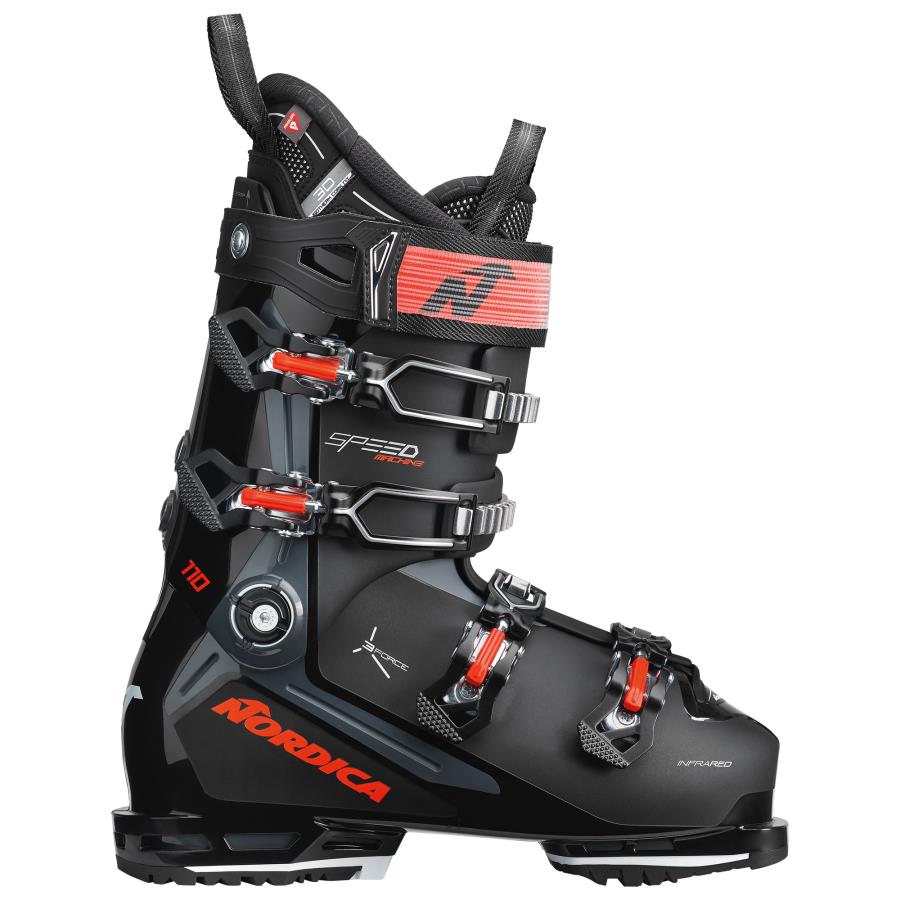
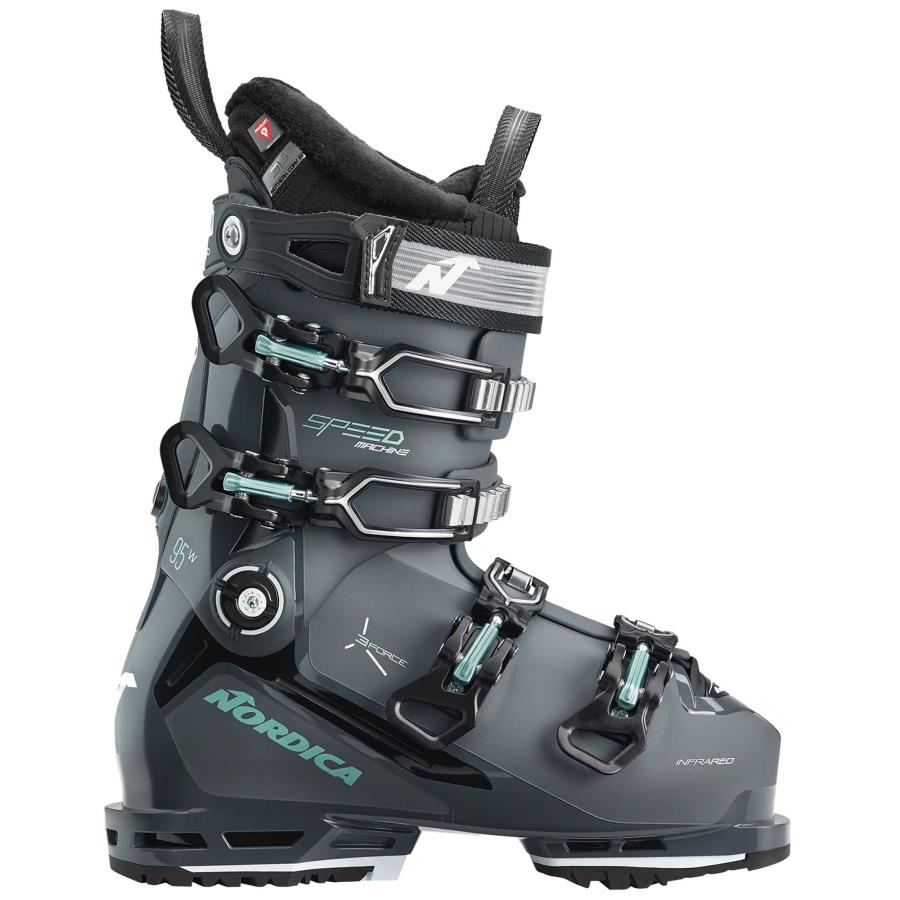
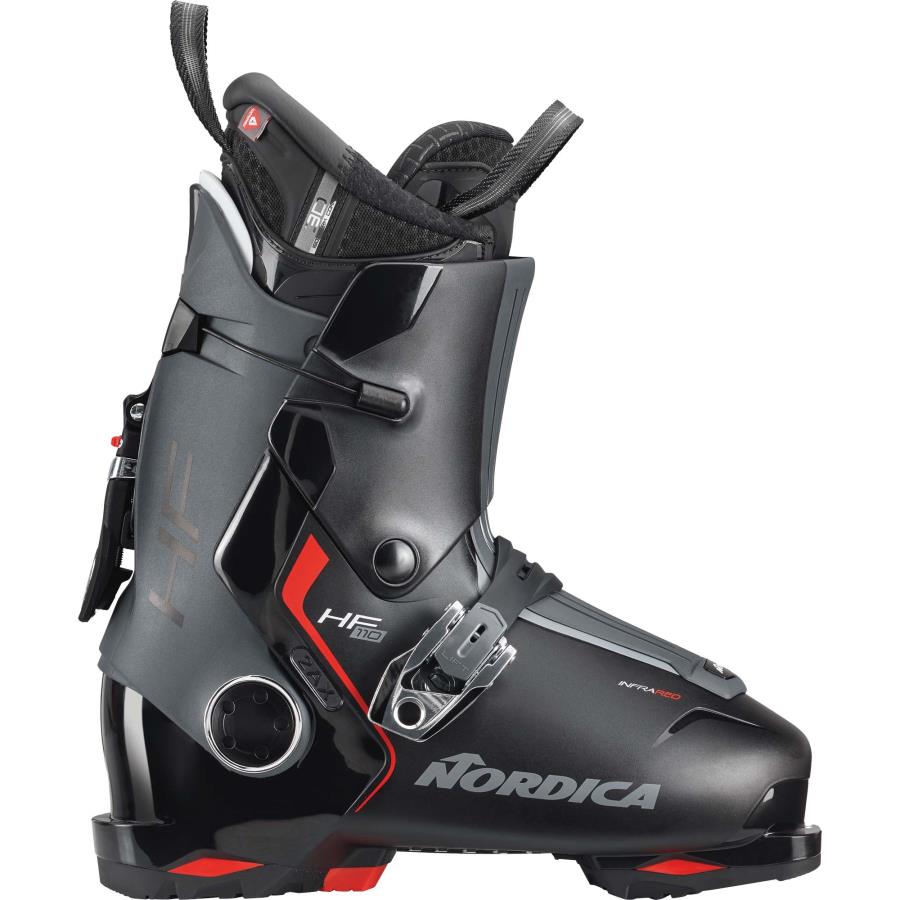


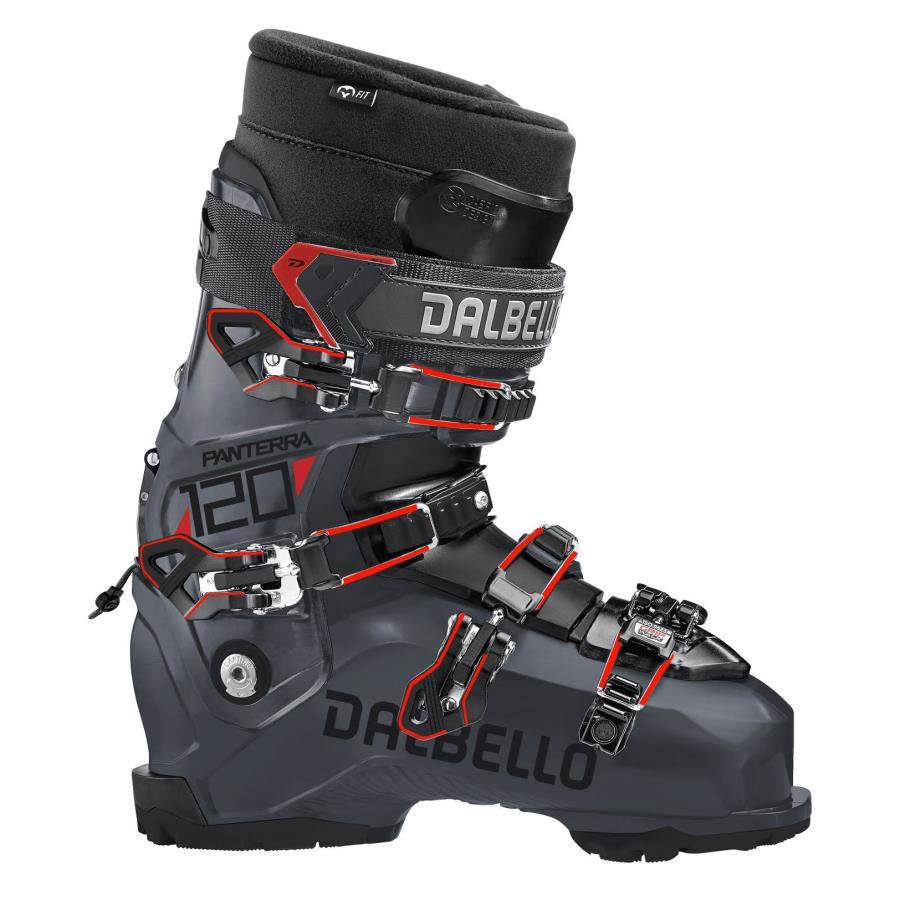
copy.jpg)
